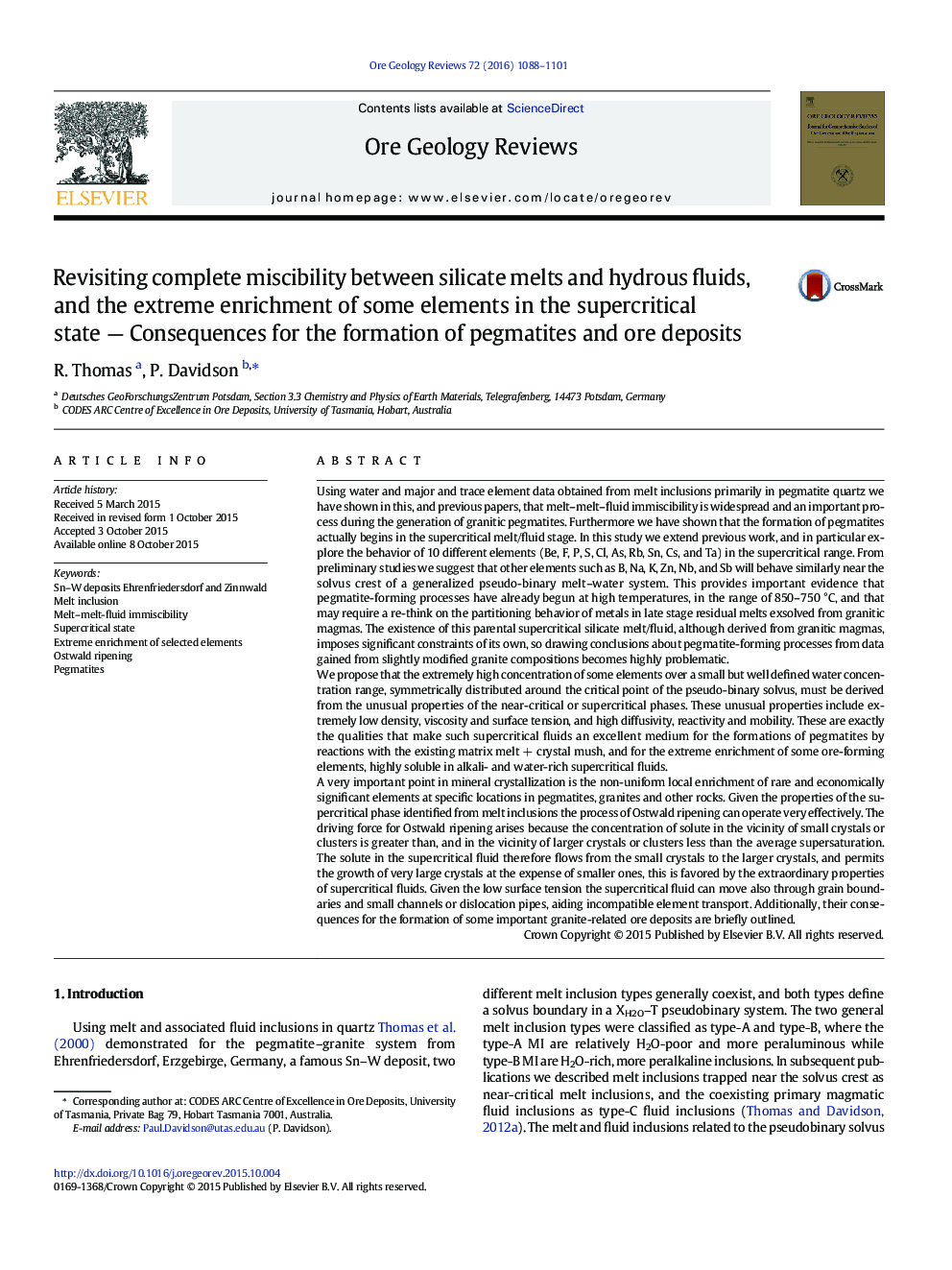| کد مقاله | کد نشریه | سال انتشار | مقاله انگلیسی | نسخه تمام متن |
|---|---|---|---|---|
| 6435834 | 1351852 | 2016 | 14 صفحه PDF | دانلود رایگان |

- We show that melt/melt immiscibility is a critical feature in pegmatite genesis.
- Pegmatite forming melts are supercritical completely miscible silicate-rich fluids.
- These are capable of dissolving extremely high concentrations of several elements.
- These solubilities are far in excess of their solubilities in aqueous fluids.
- Such supercritical residual melt/fluids may be parental to other orebody types.
Using water and major and trace element data obtained from melt inclusions primarily in pegmatite quartz we have shown in this, and previous papers, that melt-melt-fluid immiscibility is widespread and an important process during the generation of granitic pegmatites. Furthermore we have shown that the formation of pegmatites actually begins in the supercritical melt/fluid stage. In this study we extend previous work, and in particular explore the behavior of 10 different elements (Be, F, P, S, Cl, As, Rb, Sn, Cs, and Ta) in the supercritical range. From preliminary studies we suggest that other elements such as B, Na, K, Zn, Nb, and Sb will behave similarly near the solvus crest of a generalized pseudo-binary melt-water system. This provides important evidence that pegmatite-forming processes have already begun at high temperatures, in the range of 850-750 °C, and that may require a re-think on the partitioning behavior of metals in late stage residual melts exsolved from granitic magmas. The existence of this parental supercritical silicate melt/fluid, although derived from granitic magmas, imposes significant constraints of its own, so drawing conclusions about pegmatite-forming processes from data gained from slightly modified granite compositions becomes highly problematic.We propose that the extremely high concentration of some elements over a small but well defined water concentration range, symmetrically distributed around the critical point of the pseudo-binary solvus, must be derived from the unusual properties of the near-critical or supercritical phases. These unusual properties include extremely low density, viscosity and surface tension, and high diffusivity, reactivity and mobility. These are exactly the qualities that make such supercritical fluids an excellent medium for the formations of pegmatites by reactions with the existing matrix melt + crystal mush, and for the extreme enrichment of some ore-forming elements, highly soluble in alkali- and water-rich supercritical fluids.A very important point in mineral crystallization is the non-uniform local enrichment of rare and economically significant elements at specific locations in pegmatites, granites and other rocks. Given the properties of the supercritical phase identified from melt inclusions the process of Ostwald ripening can operate very effectively. The driving force for Ostwald ripening arises because the concentration of solute in the vicinity of small crystals or clusters is greater than, and in the vicinity of larger crystals or clusters less than the average supersaturation. The solute in the supercritical fluid therefore flows from the small crystals to the larger crystals, and permits the growth of very large crystals at the expense of smaller ones, this is favored by the extraordinary properties of supercritical fluids. Given the low surface tension the supercritical fluid can move also through grain boundaries and small channels or dislocation pipes, aiding incompatible element transport. Additionally, their consequences for the formation of some important granite-related ore deposits are briefly outlined.
Journal: Ore Geology Reviews - Volume 72, Part 1, January 2016, Pages 1088-1101